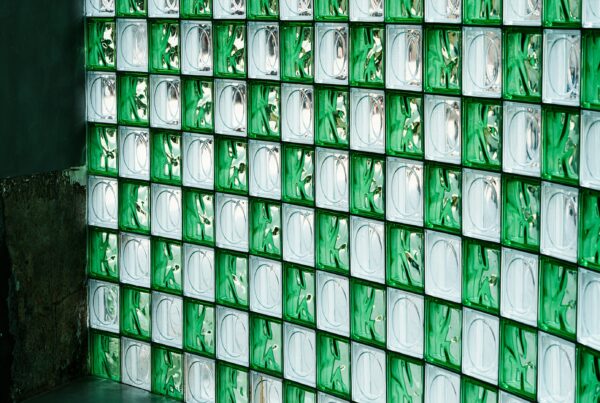Context
The use of plastic is present in our lives and it has become one of our habitual companions. Most of the objects that surround us are entirely or partially constituted by one of the many types of plastics that exist today. Some researchers have even called this era as the “Plastic Age” (Thompson, Moore, Saal, & Swan, 2009). In fact, there has been a great development of the industry during the last decades, where approximately 350 million tons of plastics are produced per year. The numerous advantages of plastic such as its flexibility, low cost, light-weight, and durability make this material ubiquitous and essential for many aspects of our daily lives.
Concerns around plastic
It is estimated that almost all 8 billion tonnes of plastics ever produced are still in the environment, flooding the planet with plastic. With the growing population and increasing consumer expenditure, especially in China and India, the demand for plastics is expected to double by 2050, raising concerns about the impact it will have on the environment. Numerous studies show that issues associated with plastic pollution such as the presence of microplastics in bottled waters, the low decomposition rate of such materials and the introduction of it to the ocean pose high threats to human health and the different ecosystems found on our the planet. Therefore, there is an urge to come up with a set of integrated solutions to reduce and mitigate the problem.
Aims for a more sustainable future
The 17 Sustainable Development Goals (SDGs) established by the UN in 2015 addresses several challenges that we are facing on a global scale and, although plastic pollution is not presented as one of the main issues, it is closely related to various objectives such as Clean water and sanitation, Responsible consumption and production, and Life below water to mention some of them. Additionally, many companies have recently announced ambitious commitments on plastics which are intended to be achieved by the next 5-10 years. Most of the goals are focusing on achieving partial or full recycling rates by 2025 or 2030.
However…
Nearly 80% of all the plastic wastes are either incinerated or dumped into a landfill since the recycling of plastics is hard to implement. Moreover, with the low recycling rates currently been seen around the world, especially after the Chinese plastic import ban in 2017, it seems highly unlikely to reach recycling rates of 50% by 2030 or to ensure that 100% of the plastics from the packaging segment are recycled by 2040. Considering that the plastic packaging segment accounts for 45% of total plastic usage worldwide and is mainly driven by the food and beverage industry, which is expected to keep growing in upcoming years, companies within this market will have to come up with sustainable solutions to satisfy the demand and contribute in reducing the impacts of plastic pollution. Therefore, as the demand for consumer goods is expected to increase in the coming years, more plastic will eventually be required to satisfy the needs and wants of consumers, which in the end will challenge the objectives announced by the companies. For these and other reasons, several solutions and practices are currently available to be considered by stakeholders to help them accomplish their future objectives.
Traditional plastic waste management practices
Incineration
Approximately 25% of total plastic waste undergoes incineration which is a common waste management option for plastics. In this case, more than 90% of waste could be destroyed which diminishes the pressure for more landfilling space and transportation costs. Moreover, energy could be recovered as a byproduct of the process which could be used to supply electricity to thousands of homes. However, one of the major drawbacks of this method is the potential emission of harmful pollutants into the atmosphere such as heavy metals, dioxins, among others.
Landfilling
The disposal of plastic waste in landfills is the most economical and common applied method when it comes to handling plastic waste. It is estimated that more than half of plastic waste ends up in a landfill given its convenience and low cost. Also, compared to incineration, landfilling reduces significantly the potential of direct emissions into the atmosphere. Nevertheless, as plastic accumulates, there is less space available in landfills, which is not ideal since this specific waste requires much more time to decompose and some countries no longer have enough space to dump waste. In addition, the possible contamination of groundwater through leachate and the emission of gas produced by anaerobic processes at the landfill represents a threat to human health.
Recycling
Recycling is probably one of the most environmentally friendly solutions that exist today to handle plastic pollution since it requires less energy, natural resources, and raw materials compared to other traditional methods. However, recycling rates around the world are decreasing since it is a difficult process to implement due to the different types of plastic that exist today, cross-contamination, among others. Also, operation and maintenance costs are higher than those of landfilling, which discourages stakeholders from adopting this approach.
Alternative plastic waste management approaches
Given that traditional waste management practices do not solve the problem entirely, possible alternative solutions are currently been explored to handle plastic pollution where some of the most popular are described below.
Chemical recycling
Chemical recycling is a process by which the decomposition of the polymer takes place to obtain the starting components (monomers). From these monomers, and after a new polymerization process, new polymeric materials can be obtained. Generally speaking, plastics could be converted into fuels that could be used to produce new plastic products. Chemical recycling can be done through different processes where some of them are:
- Pyrolisis
- Plasma arc gasification
- Conventional gasification
These processes could theoretically, divert plastic waste disposed to landfills, reduce the environmental risks caused by the emissions of harmful pollutants into the atmosphere caused by conventional incineration and produce useful byproducts at the end of the cycle. These advantages make chemical recycling one of the most promising alternatives to solve plastic pollution. However, lack of commercial facilities, poor energy transformation efficiencies and the absence of technologies to handle diverse input mixes of waste hinders this alternative to be commercially viable at scale.
Alternative materials
The use of alternative materials to replace the functions of plastic has also been discussed lately as a possible solution to plastic pollution where glass and metal are portrayed as the most suitable replacements. However, despite having higher recycling rates when compared to plastics, several studies show that the overall carbon footprint of alternative materials appears to be higher than those of plastics given that they require more energy to be produced and transported. For example, a cradle-to-grave LCA (Lice Cycle Assessment) analysis report published by The Danish Environmental Protection Agency in 2018 found that 7 times more water is consumed to produce a conventional cotton bag when compared to the amount of water required to produce an average plastic LDPE (Low-density polyethylene) bag. In terms of depletion of fossil fuels (or energy, in MJ), cotton production required 32 times more energy than plastic production. This means that if we ONLY consider water or energy use, we will need to reuse a cotton bag 7 and 32 times respectively to outperform the impacts of producing one average plastic LDPE bag. If we consider all the environmental indicators, a conventional cotton bag has to be used at least 7,100 times to outperform ALL the environmental impacts caused by one LDPE average shopping bag.
Furthermore, from an economic perspective, “more sustainable” alternatives are proved to be 2 or 3 times more expensive than plastic-made materials, raising doubts on whether consumers would be willing to pay higher prices for the product or whether producers and retailers will be willing to reduce their margin profits by including higher material costs.
Plastic eating microorganisms and worms
Microorganisms capable to reduce the biodegradation time of plastics and worms which can break down plastic and turn it into compost have been recently discovered by the scientific community. Nevertheless, the consumption rate of both alternatives is low and further research is pending to determine whether these solutions could be available at scale. Also, there is a potential risk that bee colonies could be drastically reduced by farmed plastic-eating worms, disrupting the ecological balance needed to keep a healthy ecosystem.
Bans and taxation
With rising concerns about plastic pollution and low recycling rates seen around the world, governments are imposing taxes and bans on plastics to discourage the use and demand of plastics. With these measures, governments expect to reduce plastic consumption promptly while forcing retailers and producers in developing more sustainable alternatives. Moreover, imposed taxes could diminish the economical costs needed to mitigate the negative environmental impacts caused by plastic pollution.
TRUE Zero Waste programme
Several programmes, such as the TRUE (Total Resource Use and Efficiency) Zero Waste certification programme, have been created to support the implementation of zero waste policies in companies and to change how materials are being used and how they flow through their life cycle. Companies seeking a TRUE Zero Waste certification are required to collect data on the generation and diversion of waste for a period of 12 months and demonstrate that at least 90% of the waste generated including plastics were diverted from incinerators or landfills. The diversion of waste can be done through reduction, reuse, recycling, composting or recovery. This certification programme applies to all types of projects that are in operation and is administered by the GBCI (Green Business Certification Inc.), the same body that administers other project certifications such as LEED (Leadership in Energy and Environmental Design).
Conclusion
Traditional approaches do not solve the problem alone and several other alternatives have not been fully implemented for several reasons such as the lack of further comprehensive studies, absence of technology or economic constraints. Therefore, as feasible options are still underway, it is likely that taxation and plastic bans will have the greatest impact on controlling plastic pollution. In addition, many consumers are moving away from single- use plastics as public concerns about plastic pollution arise, driving companies to adopt innovative and alternative solutions for packaging as an example. In this sense, companies and retailers can adopt different practices such as pursuing a TRUE Zero Waste certification which can help them meet the long-term plastic-related objectives. In general, integrated approaches should be applied instead of single approaches to solve the issue. Consumer behavior changes, increased problem awareness, increased incentives for stakeholders among others are all part of the solution that should be adopted in a holistic and integrated manner to solve the environmental impacts caused by plastic pollution.
References
Jefferies Group LLC. (2020). Jefferies Equity Research, Drowning in Plastic — Who Sinks, Who Swims?
Thompson, R. C., Moore, C. J., Saal, F. S., & Swan, S. H. (2009). Plastics, the environment and human health: current consensus and future trends.
Philosophical Transactions of The Royal Society B Biological Sciences, 364(1526), 2153-2166.









